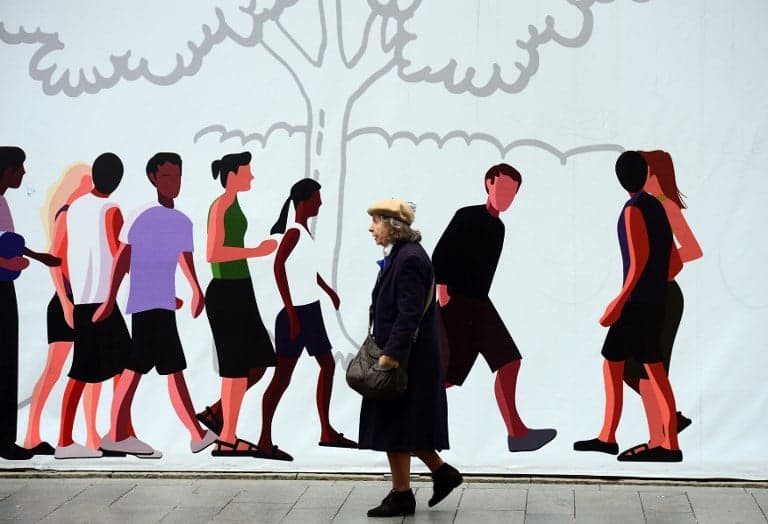What is Italy doing to increase its plummeting birth rate?

As Italy records a historic low birthrate and the president calls for “every possible initiative” to reverse the trend, we look at why it's happening and what's really being done.
A new record low number of births was registered in Italy in 2019, according to the latest data released this week by national statistics bureau Istat.
There were just 435,000 births registered in Italy last year, the lowest on record, meaning the country's overall population is ageing more than ever before.
The figures "fully reflected the trends highlighted for some time", Istat stated.
Italy’s population hit a peak in 2015 at 60.8 million, but has been steadily dropping since and now sits at 60.3 million, the Istat figures showed.
The news that Italy's birthrate is at at an all-time low was greeted with alarm by the Italian president, Sergio Mattarella, who described it as “a problem that regards the existence of our country.”
"This means that the fabric of our country is weakening, and every possible initiative should be taken to combat this phenomenon,” he told reporters. “Families are not Italy's connective tissue, they are Italy.”
If the long-term trend continues, Italy’s population is expected to drop by seven million over the next 50 years, according to Istat.
The growing demographic crisis, with births falling and life expectancy rising, is thought to be both a symptom and a cause of Italy's chronically stagnant economy.

Photo: AFP
While most Italians do want to have at least two children, according to Istat, experts point out that Italy's high levels of unemployment, the proliferation of badly-paid, short-term work contracts, and a lack of affordable housing and childcare mean many young people put off starting a family as they think it's unaffordable to do so in Italy, which does not offer any form of comprehensive child benefit
The average age at which women in Italy have their first child is now 31 – the oldest in the EU, Eurostat figures show.
Many other European countries, such as Germany, are seeing similar trends, while the birth rate is more stable in the UK and France.
READ ALSO:
Meanwhile, life expectancy in Italy has continued to rise, hitting 85.3 years for women and 81 years for men - one of the highest rates in Europe.
Its median age is now 45 years compared to the EU's median of 42.8, higher than any other European country except Germany.
Successive Italian governments have promised to implement policies aimed at reversing the trend, but nothing so far seems to have made an impact.
While some previous policy ideas - such as the suggestion of giving away a piece of farmland to families who have a third child - may have fallen flat, Italy's most recent budget included plans to give more financial help to families.
The government announced in December 2019 that Italy's “baby bonus”, a monthly payment which has so far been reserved for families with a total annual income below 25,000 euros. would become available to all families in 2020.
The government also announced more funding for childcare per family, depending on income, and that mandatory paternity leave would increase from five to seven days.
More details of the government's new budget allowances for families can be found here.
One thing already offsetting the declining birth rate in Italy is immigration and a steady rise in births among foreign nationals, Istat found.
While surveys suggest that most Italians believe there are "too many immigrants" in their country, and fear that immigration will negatively affect the economy, legal newcomers from outside the EU already pay enough social security contributions to fund the pensions of 600,000 retired Italians.
The figure could rise exponentially if more migrants were permitted to work legally.
As younger Italians continue to move abroad to find work, immigrants increasingly make up a new tax-paying workforce in Italy, as well as caring for the ageing Italian population.
The majority of professional caregivers in Italy – 80 percent by some estimates – are foreign nationals.
READ ALSO: Immigration to Italy: a look at the numbers
Comments (1)
See Also
A new record low number of births was registered in Italy in 2019, according to the latest data released this week by national statistics bureau Istat.
There were just 435,000 births registered in Italy last year, the lowest on record, meaning the country's overall population is ageing more than ever before.
The figures "fully reflected the trends highlighted for some time", Istat stated.
Italy’s population hit a peak in 2015 at 60.8 million, but has been steadily dropping since and now sits at 60.3 million, the Istat figures showed.
The news that Italy's birthrate is at at an all-time low was greeted with alarm by the Italian president, Sergio Mattarella, who described it as “a problem that regards the existence of our country.”
"This means that the fabric of our country is weakening, and every possible initiative should be taken to combat this phenomenon,” he told reporters. “Families are not Italy's connective tissue, they are Italy.”
If the long-term trend continues, Italy’s population is expected to drop by seven million over the next 50 years, according to Istat.
The growing demographic crisis, with births falling and life expectancy rising, is thought to be both a symptom and a cause of Italy's chronically stagnant economy.

Photo: AFP
While most Italians do want to have at least two children, according to Istat, experts point out that Italy's high levels of unemployment, the proliferation of badly-paid, short-term work contracts, and a lack of affordable housing and childcare mean many young people put off starting a family as they think it's unaffordable to do so in Italy, which does not offer any form of comprehensive child benefit
The average age at which women in Italy have their first child is now 31 – the oldest in the EU, Eurostat figures show.
Many other European countries, such as Germany, are seeing similar trends, while the birth rate is more stable in the UK and France.
READ ALSO:
Meanwhile, life expectancy in Italy has continued to rise, hitting 85.3 years for women and 81 years for men - one of the highest rates in Europe.
Its median age is now 45 years compared to the EU's median of 42.8, higher than any other European country except Germany.
Successive Italian governments have promised to implement policies aimed at reversing the trend, but nothing so far seems to have made an impact.
While some previous policy ideas - such as the suggestion of giving away a piece of farmland to families who have a third child - may have fallen flat, Italy's most recent budget included plans to give more financial help to families.
The government announced in December 2019 that Italy's “baby bonus”, a monthly payment which has so far been reserved for families with a total annual income below 25,000 euros. would become available to all families in 2020.
The government also announced more funding for childcare per family, depending on income, and that mandatory paternity leave would increase from five to seven days.
More details of the government's new budget allowances for families can be found here.
One thing already offsetting the declining birth rate in Italy is immigration and a steady rise in births among foreign nationals, Istat found.
While surveys suggest that most Italians believe there are "too many immigrants" in their country, and fear that immigration will negatively affect the economy, legal newcomers from outside the EU already pay enough social security contributions to fund the pensions of 600,000 retired Italians.
The figure could rise exponentially if more migrants were permitted to work legally.
As younger Italians continue to move abroad to find work, immigrants increasingly make up a new tax-paying workforce in Italy, as well as caring for the ageing Italian population.
The majority of professional caregivers in Italy – 80 percent by some estimates – are foreign nationals.
READ ALSO: Immigration to Italy: a look at the numbers
Join the conversation in our comments section below. Share your own views and experience and if you have a question or suggestion for our journalists then email us at [email protected].
Please keep comments civil, constructive and on topic – and make sure to read our terms of use before getting involved.
Please log in here to leave a comment.